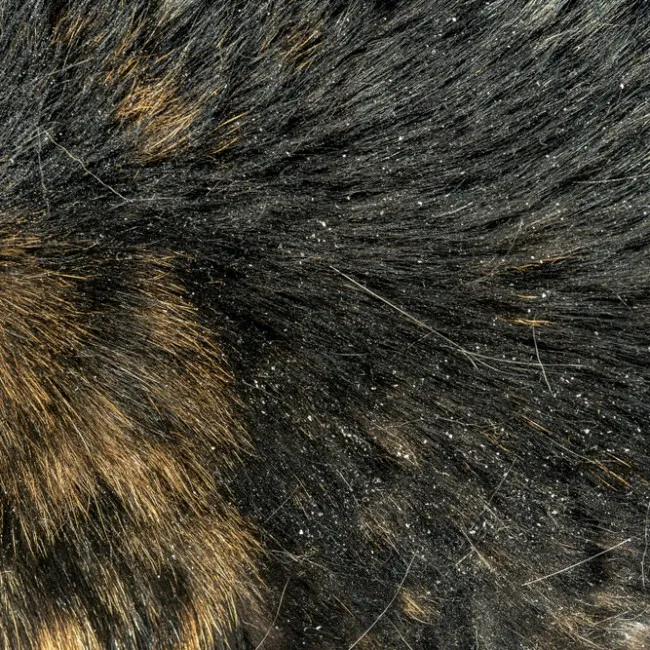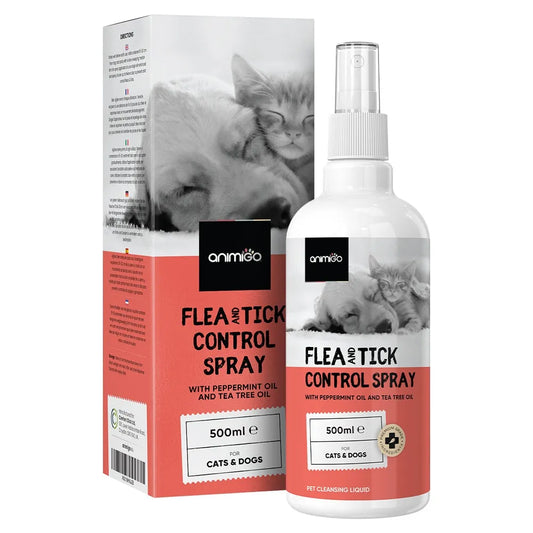How to Get Rid of Ticks on Cats
What are ticks?
Does your cat have a tick? Unfortunately, ticks on cats are extremely common and can be easily found on the skin and coat of our favourite felines. But what is a tick? A tiny bug-like creature, ticks are parasites that are part of the arachnid family and related to spiders thanks to their 8 legs. Being parasites, this means they live off a host by feeding off small amounts of their blood. This sounds very vampire-ish, but the amounts are so small that the host probably won’t even be able to feel it. The real issue with ticks is not how they feed, but that they can pass infections and diseases onto the host, making them something you and your cat should be avoiding!
What does a tick look like?
In general, ticks are quite easily identifiable compared to other bugs, insects and parasites such as fleas. They are egg-shaped and can vary from a dirty-cream colour to darker brown or grey. They can be anywhere between 1 mm and 1 cm in length, depending on how much they have fed; unfed they are around the size of a sesame seed, but when full of their host’s blood they can get to around the size of a coffee bean. Thankfully, ticks on cats are pretty noticeable thanks to their size and lack of movement; they’ll seem like small bumps on your cat's skin that you can see when carefully moving any fur out of the way.
How do cats get ticks?
Ticks can be found lurking in grassy areas and woodlands, so cats can easily get ticks by being around these kinds of areas. A tick will perch on something like a tall blade of grass so that when a cat, or any other potential host, brushes past, it can either drop or climb onto their fur and then latch onto their skin. As a result, you’ll usually find a tick on cat’s ears, head, neck and feet. Your cat can also get a tick if they’re around other animals or pets that have had them previously, as once full they can drop off the original host and then when ready climb onto the next. This is why it is especially important to get rid of the tick on your cat if you have other pets in the household.
Ticks on cats symptoms
The first sign of ticks on cats is seeing them. Ticks are big enough to see in their fur, so you’ll know for sure if they have one or not if you see one latched onto their skin. There are some other things to look out for on your cat though that may be a symptom of them having a tick. A tick bite can cause irritation and redness in the area and if your cat has a tick allergy, this can be worsened. Other symptoms of a serious reaction due to a cat tick allergy includes weight loss, fever, appetite change, lethargy and depression. In addition to this, as ticks can potentially carry and spread diseases, there are a number of individual symptoms to look out for that can indicate if it is just a simple tick bite or a more serious issue.
Tick diseases in cats
The most common disease ticks can pass on to cats, and other animals and humans, is Lyme disease. This is caused by bacteria and affects the nerve cells and muscles. Signs of Lyme disease in cats include appetite loss, painful joints, numbness (when they can’t stand properly or move their limbs), a ‘bulls-eye’ rash around the bite, lethargy and swollen lymph nodes.
Lyme disease is the most common issue that ticks can pass onto their hosts, but there are also other more rare problems. This includes babesiosis, a disease that affects the red blood cells. These have similar symptoms to Lyme disease, but can also cause yellowish looking skin, a swollen abdomen and pale gums.
How to remove a tick from a cat
If you find a flea on your dog, first things first, do not panic! Making a fuss or trying to yank it out will just make things worse and cause distress in your cat. Instead, start by calmly checking the rest of their body to see if there are any more and to make sure that it is, in fact, a tick. To remove a tick, NEVER forcibly pull it out; this can cause the visible body to be removed, but you could leave in the head which would be buried under the skin and could lead to a number of infections and issues. Instead, find an alternative method to remove the tick.
To safely remove the full tick, you can try a specific ‘tick twister’ tool or some sterilised blunt tweezers to carefully grasp the tick and then twist it out of the skin. When doing this, make sure not to squeeze the body, as this can kill it and leave the head in the skin. If you’re not sure of how to safely pull the tick out or how to remove it yourself, you can always go to your vets and get some professional assistance.
Flea and tick treatment for cats
Parasite treatments for ticks and other pests either work to kill, control or prevent. There are a number of different choices to suit you and your cat’s needs, including:
- Spot-on treatments - This liquid treatment is placed on specific ‘spots’ on your cat, including the nape of the neck and along the back. The liquid harmlessly seeps into your cat’s skin and kills the tick or parasite without harming the cat.
- Tick powders - A topical product, this uses active ingredients that kill the tick or parasite and can be used on your cat’s fur itself as well as on their living areas such as bedding as a preventative measure.
- Tick tablets for cats - These work by allowing the tick repellent ingredients to be absorbed into the bloodstream, therefore killing the tick when they feed but without hurting the cat in any way.
- Tick collars - A special collar for pets, it works by either expelling a special tick repellant gas that repels the fleas or by using active ingredients that kill the ticks on contact.
- Flea and tick sprays - You can get two types of these sprays, one to prevent ticks and other parasites from coming near your cat’s fur and one that kills them.
- Protective shampoos - Containing a range of antibacterial ingredients, these help to protect your cat when washing as well as soothe any irritation caused by the tick bite.
If you’re not sure which one to use, there are a few questions you can ask to help you decide. Firstly, what are you looking to do? Deal with an existing tick or prevent them? This will help you decide between a tick killer and a repellent. Where is the flea located? If it is near a sensitive place, such as around the eyes, you wouldn’t want to be spraying something directly over the area but instead, use a more gentle approach. Are you only dealing with a tick or any other parasites? Whilst you can remove an individual tick from your cat’s fur with a tick twister tool, if they also have other parasites such as fleas, something like a multi-purpose spray may be more efficient. Finally, do they have any symptoms of a tick disease? If they do, it is important that you act fast and take them to the vets to help.
Tick prevention for cats
Although this may be easier said than done, tick prevention is the best way to tackle pesky parasites. There are some simple steps you can take to help you prevent fleas on your cat. Firstly, if possible, try to avoid any areas the ticks might be. This can be hard with many cats as they like to wander off by themselves, but you can always manage your garden area by cutting back long grass. You can also use protective products that act as tick repellents for cats, including sprays, shampoos and other types of products to suit your needs. When choosing one of these though, go for something that is natural that will help with repelling parasites without causing irritation.
So what is the best way to get rid of ticks on cats?
The downside is, cats and ticks are going to have to coexist, but the good side is that there are steps you can take to help. There are a number of different products and techniques out there to deal with ticks, but which is the best tick treatment for cats? Well, this really depends on you and your cat! Some people prefer to use a tick repellent for cats on a regular basis, while others prefer to intervene when their cat already has a tick. However you want to deal with these pesky parasites, you should now have some background knowledge and handy tips on how to get rid of ticks on cats for good!























